Surviving the Swings
Freeze and Thaw: Unexpected Extremes
Central Texas weather has always been unpredictable, but in recent years, the impact of climate change has added a new dimension to this unpredictability. While record-setting heat and extreme drought were anticipated, the surges of freezing temperatures and flash floods have exceeded climate model predictions. Winter Storm Uri (2021) was a record-breaking event that resulted in more than 250 deaths and $195 billion in damages. Conversely, the Austin area has also witnessed alarming stretches of 100-degree days, breaking historical records.
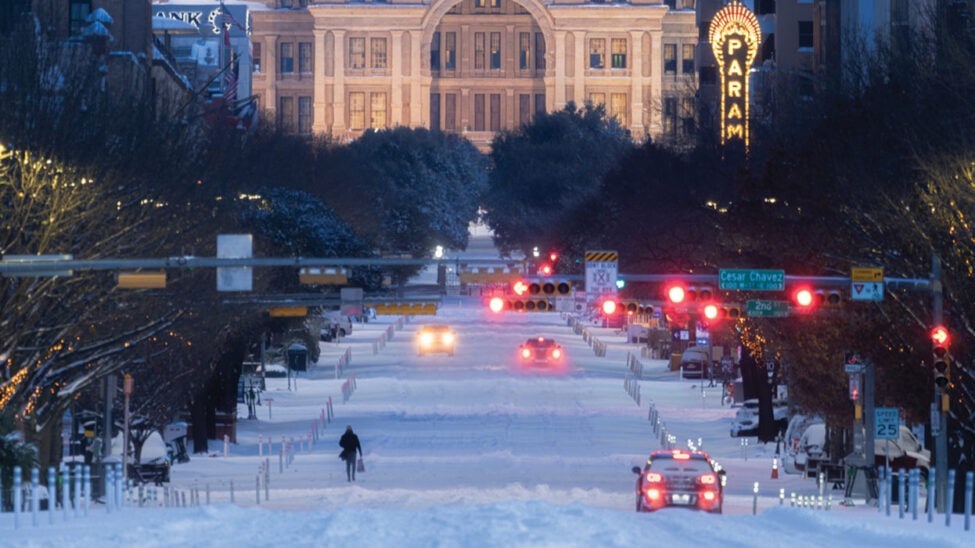
Challenges for Austin’s Canopy: A Closer Look at Trees
Austin’s urban tree canopy emerges as a critical component in climate resilience. The vital benefits it provides, from energy conservation to carbon sequestration to wildlife habitat, make its preservation a top priority. Yet, because of recent weather extremes, this formidable canopy has shown signs of strain. The combination of Winter Storm Uri and subsequent summer droughts has led to an approximate 5% tree mortality rate in Central Texas. Winter Storm Mara (2023) demonstrated how extreme drought followed by extreme freeze and ice accumulation can result in severe damage to urban canopy with falling limbs causing power outages and risks to property and public safety.
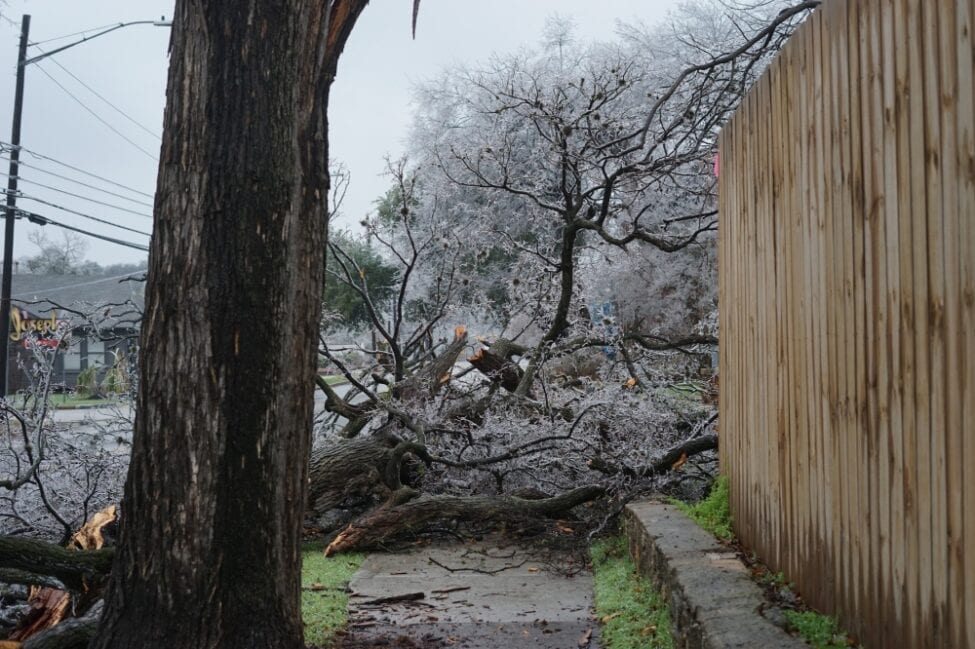
To help offset this strain, the City of Austin aims to increase canopy coverage from 33% to 50% with the adoption of its “Climate Equity Plan“. Following the lead of Austin’s Climate Equity Plan, the NeighborWoods program distributes approximately 5,000 trees annually throughout Austin, focusing on high-priority, historically disinvested areas characterized by low canopy cover.
Grasslands’ Role in Climate Resilience
While expanding the tree canopy is a crucial endeavor, it’s important to broaden our perspective and consider the role of grasslands in climate mitigation. Grasslands, spanning a significant portion of the Earth’s surface, possess the remarkable ability to store substantial amounts of carbon through their deep root networks. Because of its placement between the rocky beds of the Edwards Plateau and the rich soils of the Blackland Prairie, Austin has a unique opportunity to utilize its diverse, prairie grassland community for carbon sequestration.
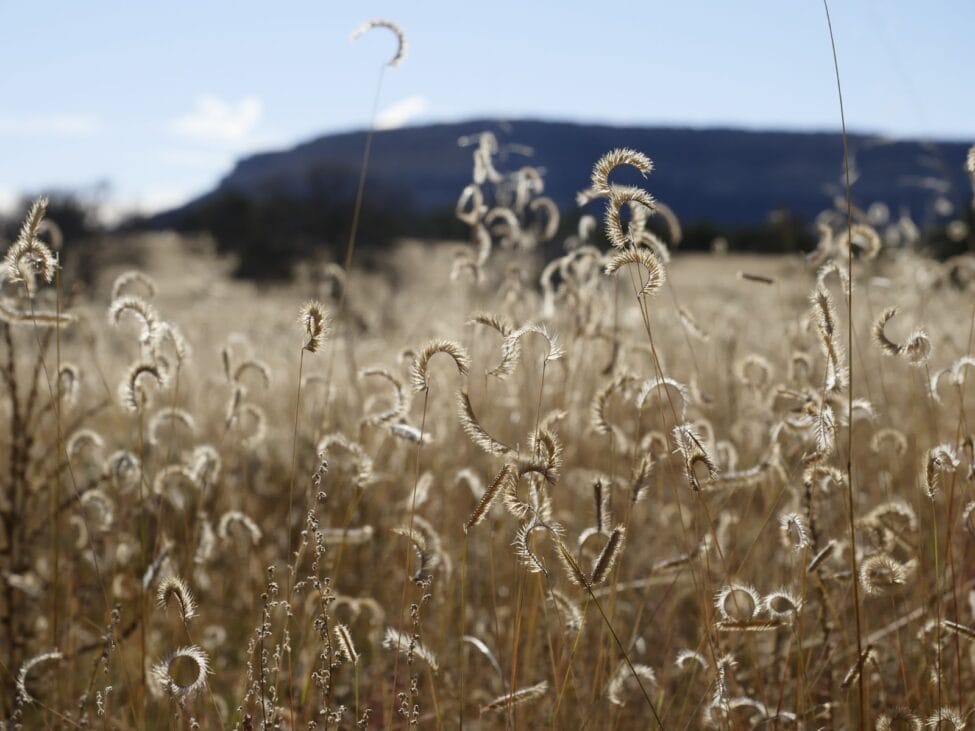
Growing Resilience: Building Robust Plant Communities
Austin’s aspirations toward climate resilience can embolden us to embrace new construction techniques and planting strategies. For example, embracing native and adaptive species promotes biodiversity and bolsters ecosystem stability. Mindful considerations of soil health, sun and wind exposure, and water availability encourages layered planting approaches with trees, forbs, and grasses. Grading and green stormwater techniques ensure creative water management that also fosters flourishing ecosystems.
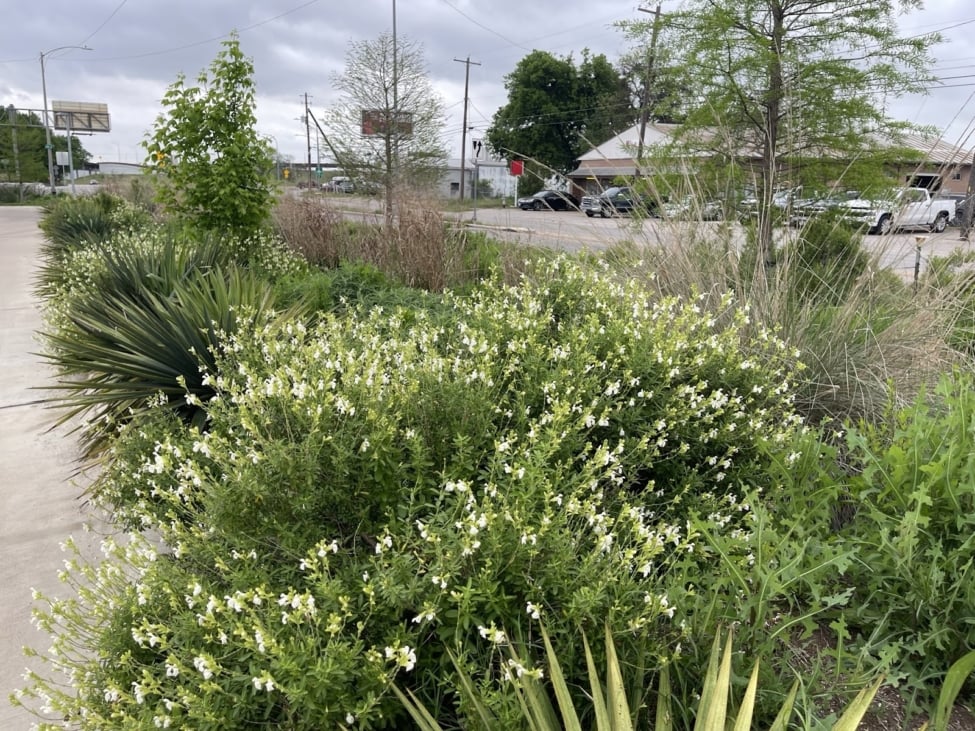
How is Studio Balcones Designing With Increasing Climate Extremes in Mind?
With all of these risks and opportunities, how can we move forward to build landscapes that contribute to become part of the solution?
We have a few successful design strategies that we apply that work for landscapes in all climates:
- First, native plants are much hardier than adaptive plants, making them essential to a plant community’s resilience. With this in mind, it’s still important to consider a site’s soil health, sun exposure, wind exposure, and drainage to determine the most appropriate plant species to use.
- We recommend a layered planting approach with lots of native forbs/grasses. Mimicking the layered plant communities we see in nature lets us take advantage of the mutually beneficial relationships these plants have forged between each other and their environment. Similar to the three sisters method of Indigenous cultivation, native plants often grow in guilds that support each other whether that be through shade, growing structure, protection from weather, soil amendment, or attracting pollinators.
- Along with that, grading early on to keep water on-site will increase the endurance of the landscape. Adding features such as rain gardens and bioswales reduces the external irrigation needs of the site, prevents pollution from runoff stormwater.
- Last but not least, it is important to embrace the fact that building differently is an exciting opportunity for positive change. When the “way we have always done it” doesn’t cut it anymore we get to explore outside the box and try new things we may have always wanted to try but never had a chance to.
We prioritize providing resilient landscapes following these strategies in all of our projects. Our landscapes are defined by their ability to recover from environmental stress like droughts, floods, and other extreme weather conditions. Here’s two of our projects that highlight this type of design thinking:
CARTS
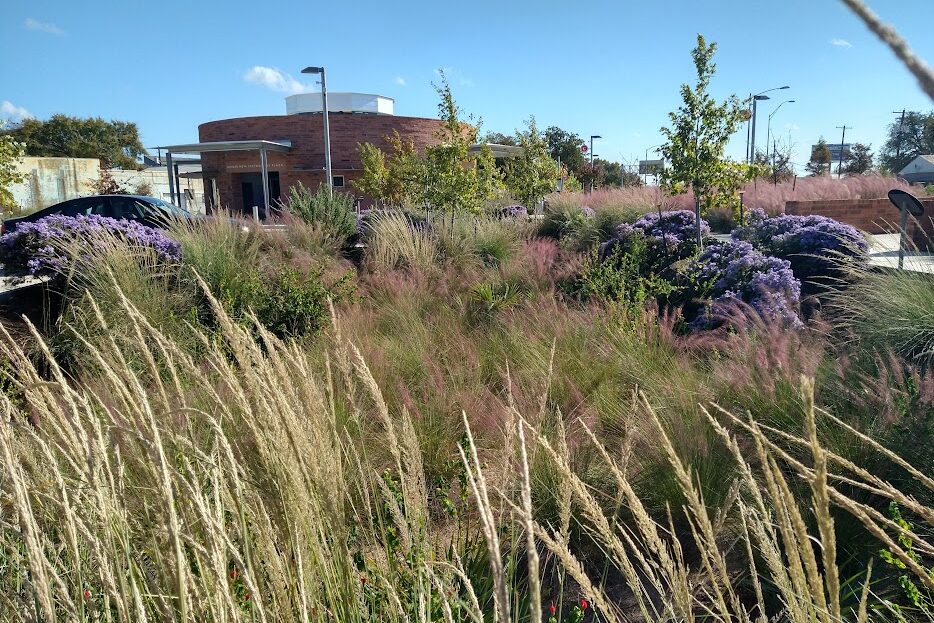
CARTS (Richard Moya Bus Plaza) is a project awarded with SITES Silver and is an excellent example of a resilient landscape. This project has survived and thrived through both summer droughts summers and severe cold events. Previously a barren compacted site used for parking large trucks, we designed a vibrant ecological hub for people and wildlife. The biodiversity on-site helps prevent any disease or pests from wiping out the entirety of the planting on-site. This is commonly seen when there is a large quantity of one plant species dominating a space, disease becomes more likely and if it strikes then the space is left baren. The diversity of plants help provide support to one another by acting as a community, providing seasonal interest and helping aid in preventing disease.
Austin Oaks Business Park
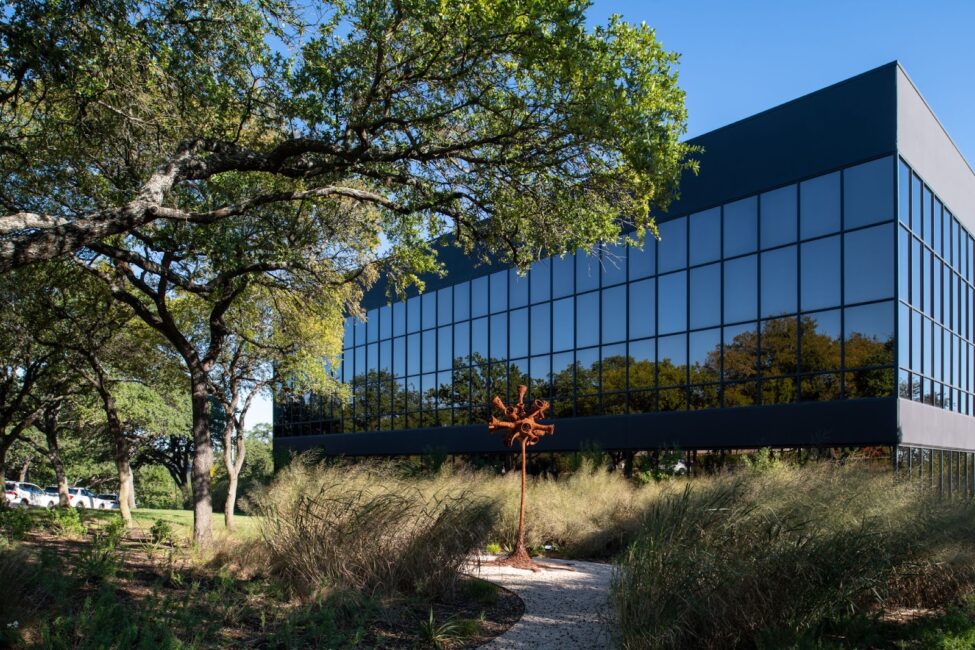
Another example of creating a resilient landscape is Austin Oaks Business Park. This site has large existing live oaks that are preserved. They provide amazing benefits such as shade, carbon sequestration, and absorbing stormwater. Due to their age, these trees are well seasoned and have an easier time dealing with extreme weather conditions thanks to their extensive root system. This site provided plenty of space for other interventions, including a prairie restoration. Over 30 species of native understory trees, perennials, and tall grasses were planted in the more programmed areas of the site. We put special care into selecting species that would survive cold snaps or revive themselves from dormancy.
The changing climate of Austin and Central Texas serves as both a sobering wake-up call and an empowering catalyst for positive change. By embracing adaptable construction practices and nurturing resilient plant communities, we can walk a path towards a more sustainable and enduring future. The cycles of nature can teach us the importance of adaptability, a lesson we must heed as we strive to harmonize with the changing rhythms of our environment.